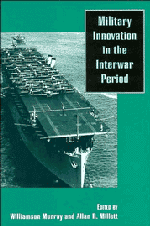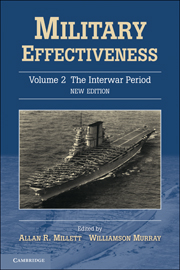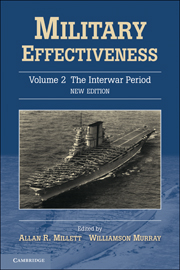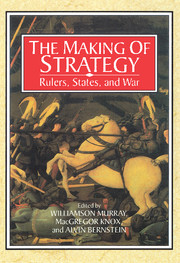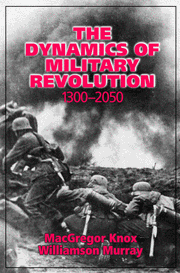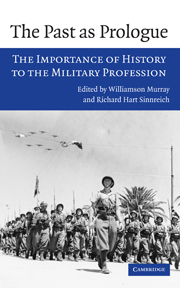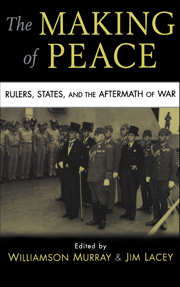Military Innovation in the Interwar Period
In 1914, the armies and navies that faced each other were alike right down to the strengths of their companies and battalions and the designs of their battleships and cruisers. Differences were of degree rather than essence. During the interwar period, however, the armed forces grew increasingly asymmetrical, developing different approaches to the same problems. This study of major military innovations in the 1920s and 1930s explores differences in exploitation by the seven major military powers. The comparative essays investigate how and why innovation occurred or did not occur, and explain much of the strategic and operative performance of the Axis and Allies in World War II. The essays focus on several instances of how military services developed new technology and weapons and incorporated them into their doctrine, organisation and styles of operations.
- A major assessment of military developments in the 1920s and 1930s
- Fully comparative study including material from USA, Japan, France, Germany, Britain
- Provides the military background to the events of World War II
Reviews & endorsements
"Alan Beyerchen's essay on German, British, and American work on radar is alone worth the price of the book and is a splendid demonstration of how a cultural and scientific historian can make a major contribution to military history. The description of how culture, organization, and strategic predicament shape a military's reception of a new technology is simply brilliant." Foreign Affairs
"Alan Beyerchen's essay on German, British, and American work on radar is alone worth the price of the book and is a splendid demonstration of how a cultural and scientific historian can make a major contribution to military history. The description of how culture, organization, and strategic predicament shape a military's reception of a new technology is simply brilliant." Foreign Affairs
"Military Innovation in the Interwar Period offers detailed insights into how to proceed with today's revolution in militray affairs. Those who find themselves today in the same position as Moffett, Towers, Liddell Hart, and Dowding did seventy years ago will want to study this book very closely." E.G.Hoffman, Naval War College Review
"This volume should make a big impact on American military academies and staff colleges, and would also make a good graduate course reader for students who have a reasonable foundation in the otherwise daunting historiography." Brian Bond, The International History Review
Product details
July 2013Adobe eBook Reader
9780511252051
0 pages
0kg
This ISBN is for an eBook version which is distributed on our behalf by a third party.
Table of Contents
- Introduction Williamson Murray and Allan R. Millett
- 1. Armored warfare: the British, French, and German experiences Williamson Murray
- 2. Assault from the sea: the development of amphibious warfare between the Wars, the American, British, and Japanese experiences Allan R. Millett
- 3. Strategic bombing: the British, American and German experiences Williamson Murray
- 4. Close air support: the German, British and American experiences, 1918–41 Richard R. Muller
- 5. Adopting the aircraft carrier: the British, American and Japanese case studies Geoffrey Till
- 6. Innovation ignored: the submarine problem, Germany, Britain and the United States, 1919–39 Holger H. Herwig
- 7. From radio to radar: interwar military adaptation to technological change in Germany, the United Kingdom, and the United States Alan Beyerchen
- 8. Innovation: past and future Williamson Murray
- 9. Patterns of military innovation in the interwar period Allan R. Millett
- 10. Military innovation in peacetime Barry Watts and Williamson Murray.

